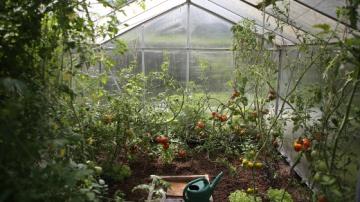Tiny computers are practically out-sized by their own potential. There's seemingly nothing they can't do, regardless of your industry or interest. For instance, did you know you could use a Raspberry Pi or Arduino to help you keep plants alive or to assist you in making tasty beer and barbecue?
Over the years, my team at the open source data platform InfluxDB has realized that professional and novice developers can combine a Pi or Arduino with InfluxDB for some unique do-it-yourself projects.
This article explores five exciting things you can do with a Raspberry Pi or Arduino and InfluxDB, whether you're a seasoned developer or a beginner. Hopefully, these ideas inspire you (and maybe offer some laughs) ahead of your next tiny computer and InfluxDB project.
1. Weather and environment monitoring
The developer relations (DevRel) team at InfluxData created the Plant Buddy application, which monitors the temperature, humidity, soil moisture, and light for to help users' plants stay alive and thrive. This project showcases using InfluxDB as a storage backend for a Python Flask server, retrieve IoT data, and use Python Dash to visualize the data. My team used an Arduino control board for the project, but treating a Raspberry Pi as a microcontroller is also simple. You could even extend the project to create a tool that monitors any other aspect of weather and the environment.
2. BBQ monitoring
Several of my colleagues at InfluxData are grilling and smoking hobbyists. But even the most basic BBQ enthusiast knows that the key to a great rack of ribs or brisket is cooking at a low and steady temperature. A handful of our developers used Arduino to monitor their BBQ pits. One utilized the monitoring and alerting API built into InfluxDB and assigned statuses based on calculating the difference in temperature between five-minute averages. Anything below 0.02 degrees every five minutes signaled that the meat was stalling. This change produced a "warn" status, triggering an alert notification sent directly to the developer's phone. He could then wrap the meat and contain the heat, ultimately resulting in deliciously cooked meat. Once again, you could use the Arduino, Seeduino, or Raspberry Pi to monitor your BBQ pit and make you a true smoke master.
3. Aquarium monitoring
Another Influxer set up a new tropical fish tank and monitored the temperature and filter for alerts against any irregularities. He used a temperature and a flowmeter to gather time series data and write it to InfluxDB. The whole project used InfluxDB, Telegraf, Grafana, and a Raspberry Pi to automate and visualize the metrics collected from the aquarium.
4. Raspberry Pi monitoring
Templates are prepackaged InfluxDB configurations. The Raspberry Pi template enables you to monitor your Raspberry Pi Linux system to collect metrics, including:
- Diskio input plugin
- Mem input plugin
- Net input plugin
- Processes input plugin
- Swap input plugin
- System input plugin
These metrics quickly and easily assure users that their Raspberry Pi device is operating as expected.
5. Home brewing monitoring
Another Influxer used Raspberry Pi to monitor the fermentation process of his home-brewed beer to ensure the highest quality.

(Anais Dotis-Georgiou, CC BY-SA 4.0)
He used a digital thermometer to read the temperature of his beer with a webcam, then deployed optical character recognition (OCR) to read the values. Next, he used Raspberry Pi with the open source collection agent Telegraf to send the data to InfluxDB. He also configured alerts that informed him when he needed to tend to the fermentation process and adjust the temperature of his beer-in-the-making. On a related note, I also used Telegraf to make forecasts about those temperature recordings.
Pi made more versatile with InfluxDB
Users can create exciting projects with an Arduino or Raspberry Pi and InfluxDB for use across various industries such as IoT, home automation, and data science.
These examples showcase the creativity developers display when given the right tools and an "open sandbox" to play in. With so many possibilities, the only thing limiting the fun open source tools you can create with time series data and Raspberry Pi is your own imagination.









Comments are closed.